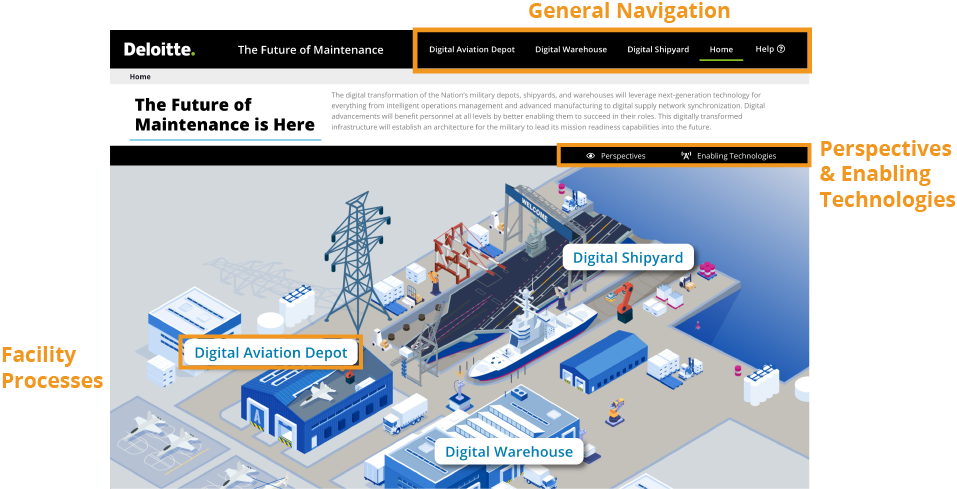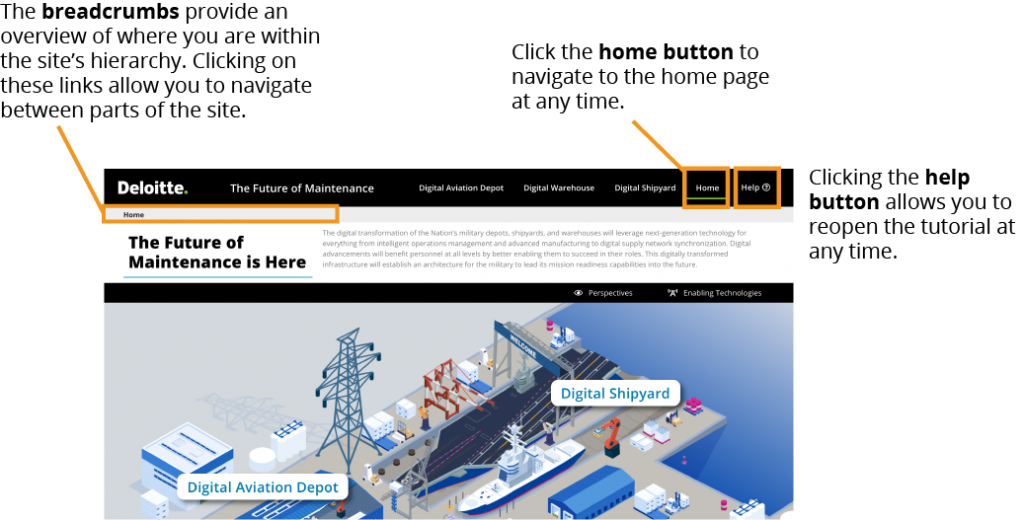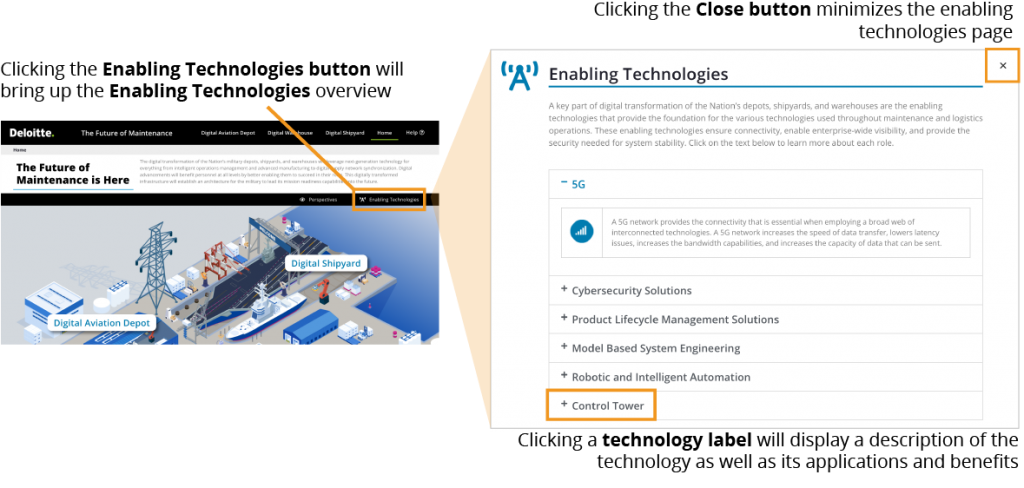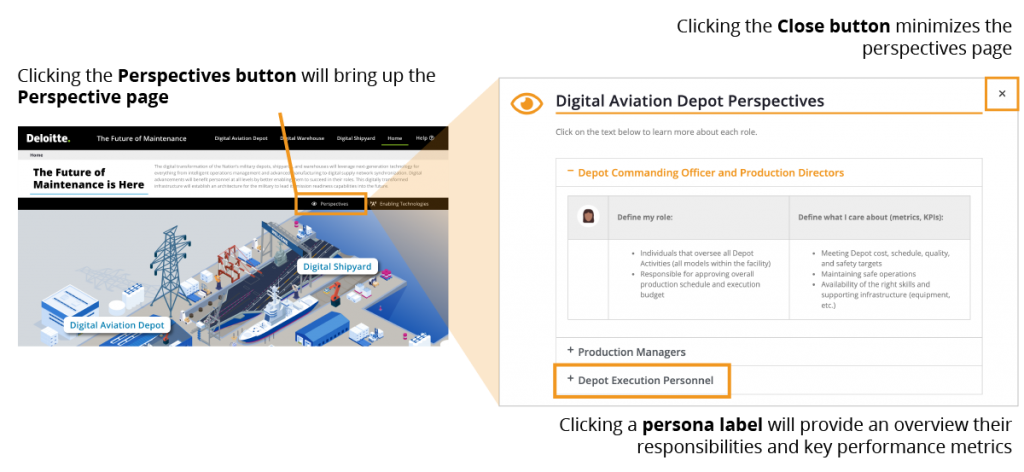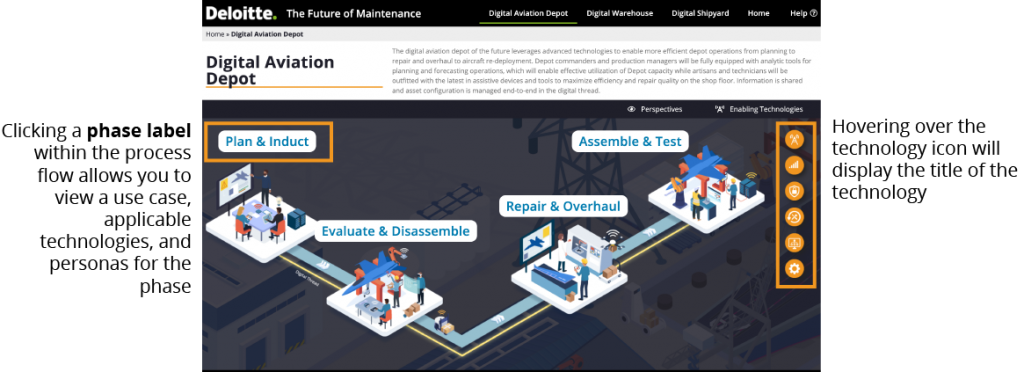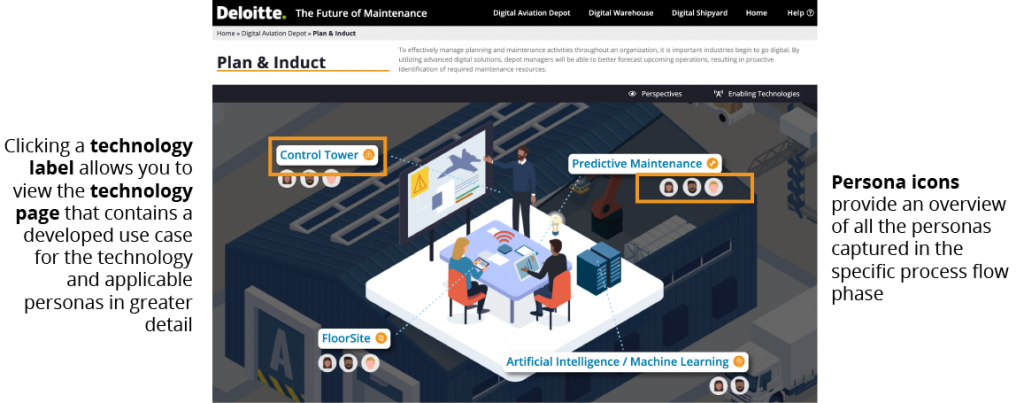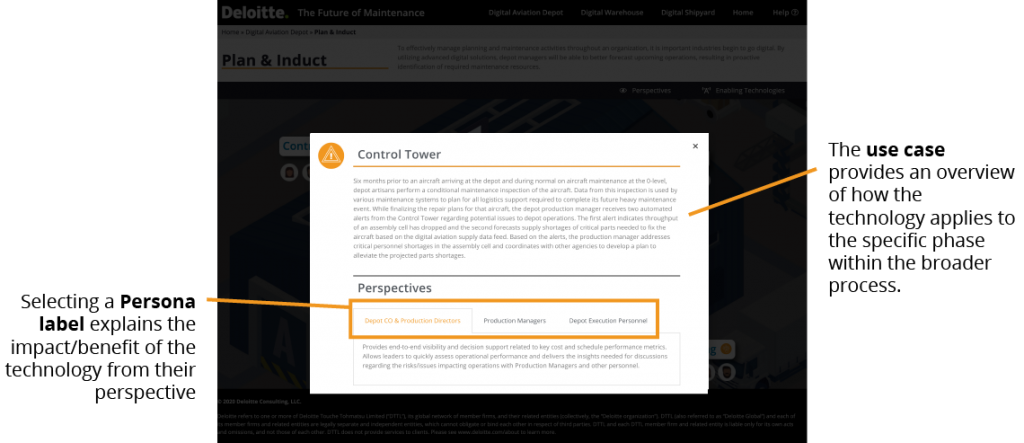Assemble & Test
Once the parts and components have been repaired, depot workers focus on testing and reassembly of the aircraft. The depot workers test repaired parts and subassemblies for quality assurance using IoT connected diagnostic tools. The depot workers are guided through their testing using tablets that contain asset specifications and historical data. The resultant production aircraft has more complete records, including a digital twin, allowing for improved configuration management of the aircraft across the enterprise.

